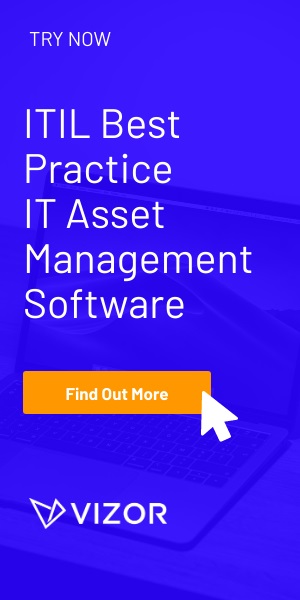Take Charge of IT Assets in 2016
It’s a new year, and that means new resolutions which – let’s be honest – most people do not end up sticking with. This year, make your resolution not only feasible, but beneficial to your whole organization by vowing to clean up and take charge of your IT assets.
Why would you need to “take charge” of IT assets, you may ask? What exactly do you need to be in charge of, and which assets should you include? We’re glad you asked! We’ve divided up the necessary steps for proper IT asset management to make it clear and simple for you.
Step 1: Know Who Has What
Let’s begin with the critical concept that is knowing “Who Has What” within your organization. This is a phrase that we use often around here, as it describes exactly what you will work towards achieving with proper IT asset management. Knowing which employees have which assets is absolutely essential in order to get your IT assets in place. Asset utilization must be carefully tracked in order to know if employees are using expensive assets, and to avoid wasting money on any that are going unused. Allocating specific assets to different employees based on their roles or current projects is something that firms often do, so all of this information must be noted and stored for things to run smoothly. In addition, assets are not always assigned to a specific person; they can be associated with a building or location and it is crucial to know where they are at all times. All of this can be accomplished when your IT assets are gathered and organized in a system, which will do the rest of the tasks for you, including asset allocation and asset recovery.
Step 2: Analyze
Once you know which IT assets you have and where they are assigned, a necessary step in any New Year Resolution program must be put into place: data analysis. Knowing the lifecycle of each asset is crucial, as this provides insight on when the asset needs to be approved, provisioned, and renewed. An asset management system can tell you which stage of its lifecycle each asset is in, and send you reminders if renewals need to be made or if other actions need your attention. In addition, using dashboards and reports to analyze your assets helps to ensure compliance and keep you up to date on everything you need to know. Forecasting costs is also very important in asset management, to ensure that you stay on budget and know which assets are costing you more or less than others. Costs should be broken down by service, maintenance, and purchase costs, while cost per user and cost per asset should be calculated alongside this information. Ensure that you can keep all related purchase information and costs in one place and matched up to the proper assets.
Step 3: Automate
The last step toward making your life a whole lot easier in asset management is automation. This is one of the key ingredients to a streamlined approach that will simplify your asset management process, where the various aspects can be automated for you in a system. Automation can be very useful for tasks such as employee onboarding, where specific assets need to be assigned to new employees immediately upon their arrival at the organization after being hired. Recovering assets from employees who leave the organization is another instance where the process can be automated for you, as software assets cannot be instantly revoked and reassigned manually. A similar process occurs when employees change roles, and need different assets in their new role that need to be quickly provided to them. Individual employee accounts can be created in asset management system, so that their specific roles and assets are matched with them and easily created or moved around if need be.
Welcoming an asset management system into your life is the way to go, and the final step towards taking charge of your IT assets – it’s nothing to be afraid of and will make your daily life significantly simpler!
Congratulations! It’s a new year and no better time to start implementing these easy steps towards improved IT asset management.
Do you need a tool to manage IT Assets?






